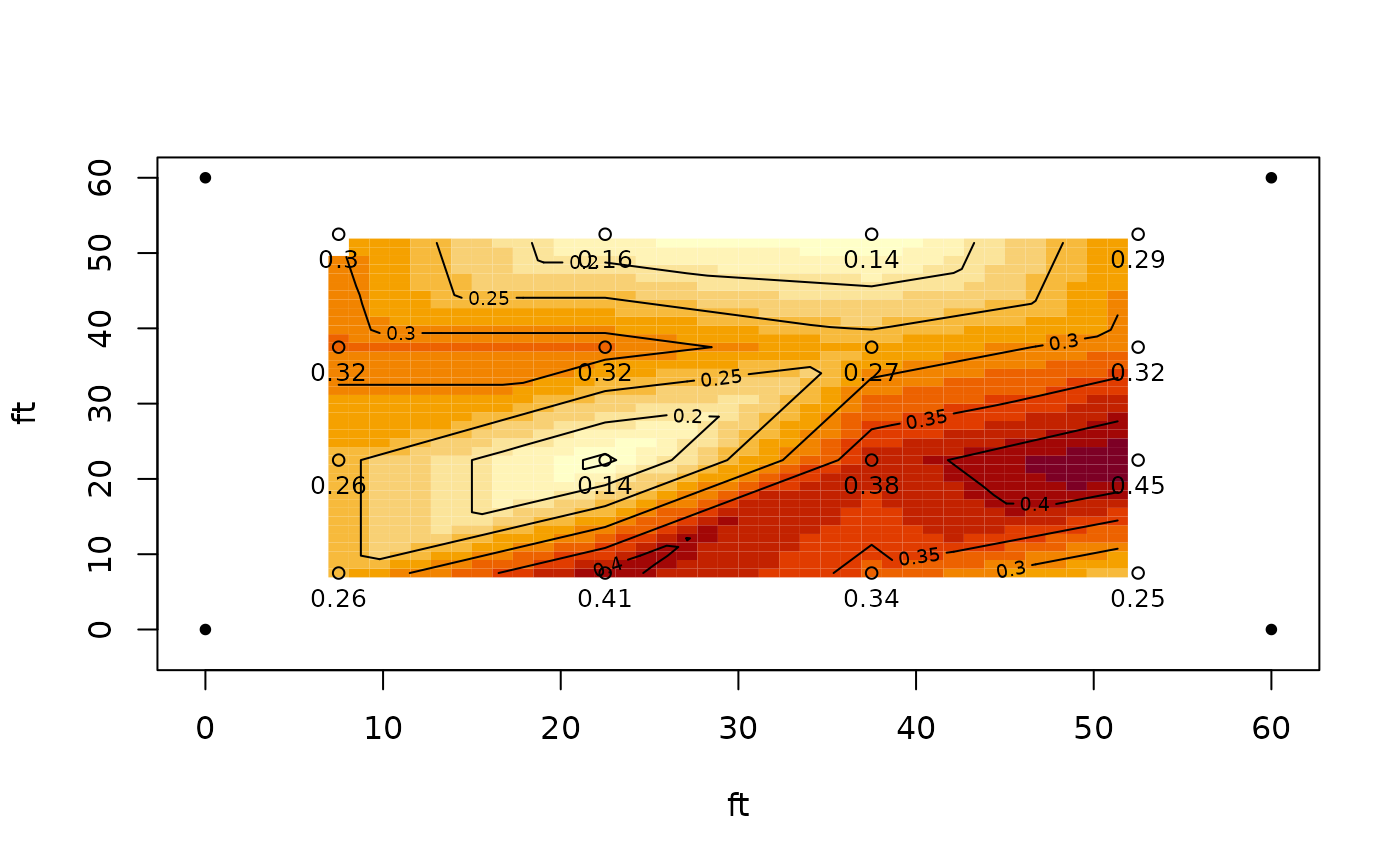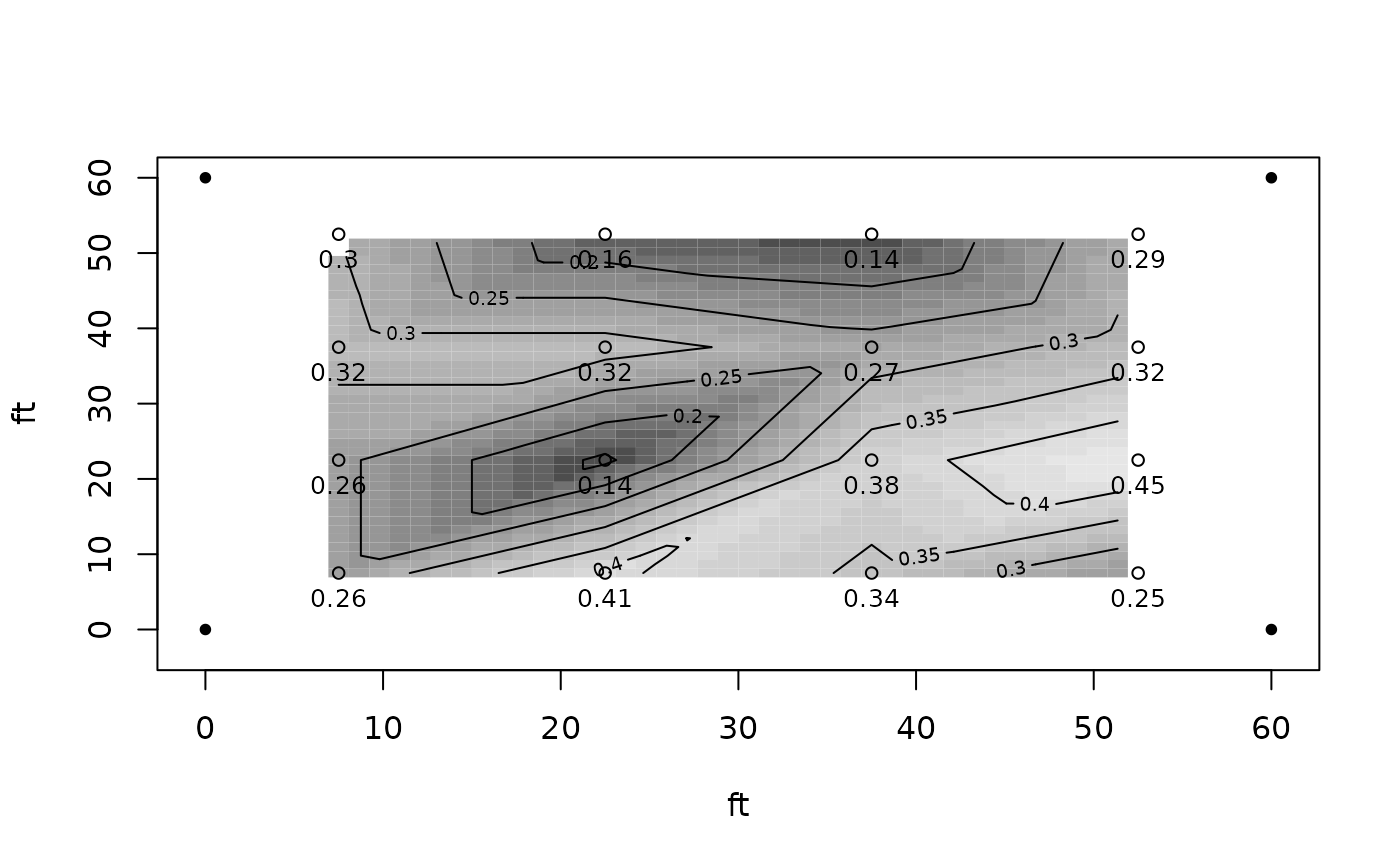Plot a plan view of sprinklers and catch cans with collected depths.
plotss.Rdplots a densigram with optional contour plot of catch can depths, with an option to label points. Both contour and point labeling are invoked by default (TRUE).
plotss(cdata,sploc,con=TRUE,xlab=NULL,ylab=NULL,xlim=NULL,
ylim=NULL,main=NULL,labelpoints=TRUE,pos=1,spklab=NULL,
pch=16,cex=0.8,edastat=FALSE,...)Arguments
- cdata
n x 3 matrix of catch can data; 1st column x, 2nd column y can locations, 3rd column catch depths
- sploc
n x 2 matrix of sprinkler location data; 1st column xi, second column yi. i=4 for 4 sprinklers with cans in-between.
- con
Logical; TRUE to overlay contour plot on densigram.
- xlab
label for x axis of plot.
- ylab
label for y axis of plot.
- xlim
bounds of x-axis.
- ylim
bounds of y-axis.
- main
main title for plot.
- labelpoints
logical; plot amounts at can locations? Default is TRUE.
- pos
if labelpoints=TRUE, position of point labels, see
text- spklab
character vector of labels for sprinklers. Defaults to bold italic to distinguish from can labels.
- pch
symbol type. See
par.- cex
scaling factor for plotting points and point labels.See
par.- edastat
Logical; call eda.stat function for stats on catch depths?
- ...
further graphical parameters to pass to internal calls to
plot.default
Value
densigram (from interp with optional contour plot overlay) and optional summary catch can statistics. Returned object is par(usr) to obtain x,y user coordinates for scaling subsequent plotting of low level plot functions on plotted densigram.
Note
requires interp package
Examples
# set sprinkler locations (ft here)
sprinklerx<-c(0,0,60,60)
sprinklery<-c(60,0,60,0)
sploc<-cbind(sprinklerx,sprinklery)
#construct can data matrix
gage.space<-15
x<-c(rep(7.5,4),rep(22.5,4),rep(37.5,4),rep(52.5,4))
y<-rep(seq(52.5,7.5,-gage.space),4)
depth<-c(0.3,0.32,0.26,0.26,0.16,0.32,0.14,0.41,
0.14,0.27,0.38,0.34,0.29,0.32,0.45,0.25)
cdata<-cbind(x,y,depth)
plotss(cdata,sploc,xlab="ft",ylab="ft")
 #> [1] -2.7 62.7 -5.4 62.7
#now grey scale colors, pass "col"
plotss(cdata,sploc,xlab="ft",ylab="ft",col=grey.colors(16))
#> [1] -2.7 62.7 -5.4 62.7
#now grey scale colors, pass "col"
plotss(cdata,sploc,xlab="ft",ylab="ft",col=grey.colors(16))
 #> [1] -2.7 62.7 -5.4 62.7
#> [1] -2.7 62.7 -5.4 62.7